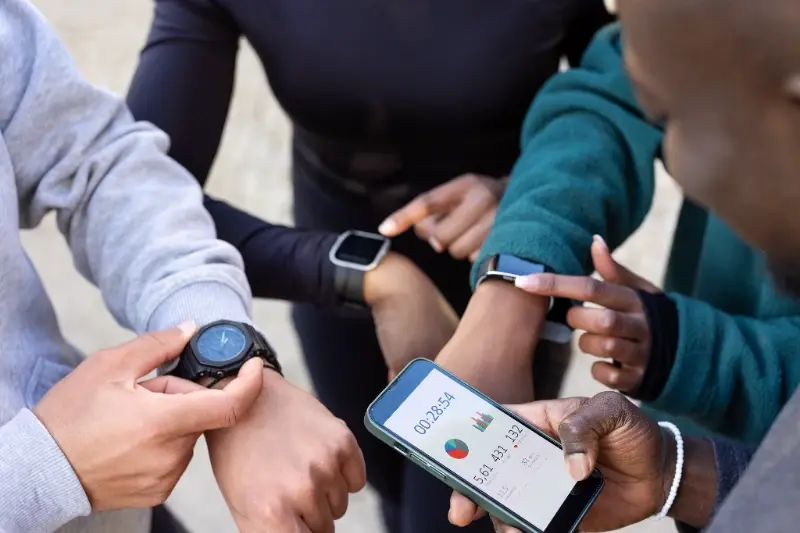Why Apps Die: The Maintenance Mistakes That Kill Mobile Apps
Every day, thousands of mobile apps disappear from app stores without a trace. Not because they were terrible ideas or poorly built—but because their creators simply stopped caring for them. These digital products, some of which cost tens of thousands of pounds to develop, become digital graveyards within months of launch.
The hard truth is that building a mobile app is only half the battle. The real challenge begins after launch when the maintenance work starts. Most app owners think they can set it and forget it, but that's where things go horribly wrong. Apps are living, breathing products that need constant attention, updates, and care.
An app without proper maintenance is like a plant without water—it might survive for a while, but it will eventually wither and die
What makes this particularly frustrating is that app failure through neglect is completely preventable. The warning signs are there months before disaster strikes. Performance starts to slow down, users begin complaining about bugs, security vulnerabilities creep in, and before you know it, your once-promising app becomes another casualty of poor maintenance practices. The consequences of this neglect ripple far beyond just losing users—they can damage your brand, waste your investment, and leave you starting from scratch.
The Silent Killer: When Updates Stop Coming
You know what's funny? I've watched perfectly good apps just... disappear. Not because they were broken or useless, but because nobody bothered to update them. It's like watching a plant die from neglect—the app slowly becomes irrelevant until users delete it and never look back.
When you stop updating your app, you're basically telling your users you don't care anymore. And trust me, they notice. First, they'll start experiencing little bugs that should have been fixed months ago. Then they'll see that new iPhone feature everyone's talking about? Your app won't support it. Before you know it, they're searching the App Store for alternatives.
The warning signs are everywhere
App stores love fresh content—they actually rank apps higher when they're regularly updated. Stop updating and your app starts sliding down the search results. Users begin leaving reviews asking "Is this app still being developed?" and potential new users see those reviews and run the other way.
I've seen brilliant apps with thousands of happy users completely collapse because the development team thought their job was done after launch. Your app isn't a book you publish once; it's more like a garden that needs constant attention to thrive.
Technical Debt: The Hidden Monster Under Your App
Picture this: you're building a house and you need to get the roof on quickly before winter hits. So you take some shortcuts—maybe you skip a few nails here, use slightly cheaper materials there. The house looks fine from the outside, but underneath those shortcuts are quietly creating problems. That's technical debt in a nutshell, and it's one of the biggest reasons mobile apps fail.
When developers are under pressure to release features fast, they often write code that works but isn't perfect. Maybe they copy and paste the same code in multiple places instead of writing it properly once. Or they skip writing tests because "we'll do that later." The app works fine at first, but each shortcut makes the next feature harder to build.
I've seen apps where adding a simple button takes weeks because the code is so messy that changing one thing breaks five others. The development team spends more time fixing old problems than building new features. Users start complaining about bugs that keep coming back, and your app developers are making your technical debt worse rather than better.
Set aside 20% of your development time each month to fix technical debt—it's much cheaper than letting it pile up.
The worst part? Technical debt is invisible to users until it's too late. By the time they notice the problems, your app might already be beyond saving.
Security Holes: Leaving Your Users Exposed
I've seen apps with security vulnerabilities that would make your hair stand on end—and trust me, most of them could have been prevented with proper maintenance. When you stop updating your app's security measures, you're basically leaving the front door wide open for hackers.
The scary part? Users don't know they're vulnerable until it's too late. They've trusted you with their personal information, payment details, and private messages. Every day you delay security updates is another day cybercriminals have to find new ways into your system.
Common Security Risks in Unmaintained Apps
- Outdated encryption that can be easily cracked
- Unpatched vulnerabilities in third-party libraries
- Weak authentication systems that haven't been updated
- Data storage methods that no longer meet security standards
- API endpoints with known security flaws
When a major security breach happens, it's not just about fixing the problem—it's about rebuilding trust. Users will delete your app faster than you can say "data breach". The damage to your reputation can take years to repair, if it ever fully recovers.
Security isn't something you can set and forget. It requires constant attention, regular updates, and staying ahead of new threats. Skip this maintenance, and you're gambling with your users' safety.
Platform Changes: When Your App Gets Left Behind
Apple and Google don't sit still—they're constantly updating their operating systems, introducing new features, and changing how things work. When iOS 15 drops or Android 12 arrives, your mobile app needs to keep up or it'll start breaking in ways you never expected.
I've watched perfectly good apps become unusable overnight because they weren't prepared for a platform update. Buttons stop working, screens go blank, or the app crashes every time someone tries to open it. The worst part? Your users don't care that it's Apple's fault—they blame you.
The API Nightmare
Operating systems regularly deprecate old APIs (the code that lets your app talk to the phone's features) and introduce new ones. If your app is still using the old camera API from three years ago, it might stop working completely when users update their phones. This isn't just about fancy new features—it's about basic functionality breaking.
We had one client whose app stopped working for 60% of users after an iOS update because they hadn't updated their payment processing code in two years
App stores also raise their standards regularly. They might require apps to support the latest screen sizes, use newer security protocols, or meet updated accessibility guidelines. Miss these requirements and your app gets kicked out of the store entirely—no new downloads, no updates, nothing.
Performance Problems: The Slow Death of User Experience
I've watched perfectly good apps slowly lose their user base not because they stopped working, but because they started working badly. Performance issues are like a slow poison—users don't abandon your app immediately, but they get more frustrated with each laggy interaction until one day they just... stop opening it.
The signs are always there if you know where to look. Apps that used to load instantly now take several seconds to start up. Scrolling becomes jerky and unresponsive. Battery drain increases dramatically. These problems don't happen overnight; they creep in as the app accumulates more features, more data, and more complexity without proper optimisation.
The Most Common Performance Killers
- Memory leaks that gradually slow down the entire device
- Unoptimised images and media files that bloat the app size
- Poor database queries that get slower as data grows
- Background processes that drain battery life
- Outdated code that doesn't take advantage of newer, faster APIs
What's particularly frustrating is that performance problems often go unnoticed during development. Your test environment runs perfectly on the latest devices with minimal data, but real users have older phones, slower connections, and years of accumulated information. By the time you realise there's a problem, you've already lost users who won't be coming back.
User Experience Decay: How Apps Become Outdated
I've watched so many good apps slowly become irrelevant—not because they were bad, but because they just stopped evolving. User experience decay happens when your app's design and functionality start feeling old compared to what users expect from modern apps. Think about it: what felt cutting-edge three years ago probably looks quite dated now.
The thing is, users don't stay still. Their expectations change as they use newer apps with better interfaces and smoother interactions. When your app doesn't keep up with these shifting standards, it starts to feel clunky and outdated. People notice when your navigation feels old-fashioned or when simple tasks take too many taps.
Common Signs of UX Decay
- Outdated visual design that looks old-fashioned
- Complex navigation that confuses users
- Too many steps to complete simple tasks
- Poor accessibility features
- Inconsistent design patterns throughout the app
The scary part? This decay happens gradually. Users don't wake up one day and suddenly hate your app—they slowly drift away to competitors with more modern experiences. By the time you notice the decline in user engagement, significant damage has already been done to your app's reputation and user base.
Regularly review your app's user journey and compare it to leading apps in your category. If completing basic tasks feels cumbersome compared to modern standards, it's time for a UX refresh.
The True Cost: What Happens When Apps Die
When an app dies, it doesn't just disappear quietly. The fallout can be massive, and I've seen businesses struggle to recover from the damage. Users don't just move on—they feel abandoned, frustrated, and often quite angry about losing something they relied on.
The financial impact hits hardest. You've already spent thousands (sometimes hundreds of thousands) building the app, and now you're looking at starting over from scratch. That's money down the drain, plus the cost of building a replacement. But money isn't the only thing you lose.
What You Actually Lose When Your App Dies
- All your user data and analytics
- Customer trust and loyalty
- Market position to competitors
- Revenue from in-app purchases or subscriptions
- Your app store rankings and reviews
- Brand reputation and credibility
The reputation damage can last for years. Users remember apps that let them down, and they're not quick to forgive. They'll tell their friends, leave negative reviews, and be sceptical about any future apps you release. Social media makes this worse—one frustrated user can reach thousands of people in minutes.
Recovery is possible, but it's expensive and time-consuming. You're not just rebuilding an app; you're rebuilding trust. That takes much longer than writing code.
Conclusion
After years of building mobile apps for clients of all sizes, I've seen the same pattern play out time and time again—brilliant apps that start strong but slowly fade into obscurity. Not because they were bad ideas, but because their owners treated them like finished products rather than living, breathing pieces of software that need constant care.
The truth is, mobile app failure isn't usually dramatic. There's no sudden crash or catastrophic bug that kills everything overnight. Instead, it's death by a thousand cuts: missed updates, growing technical debt, security vulnerabilities, poor performance, and an interface that feels increasingly outdated. Each neglect consequence might seem small on its own, but together they create an app that users simply don't want to use anymore.
What makes this particularly frustrating is that most of these issues are completely preventable. Regular maintenance, staying on top of platform changes, and listening to user feedback aren't glamorous tasks—but they're what separate successful apps from the millions gathering digital dust in app stores. The apps that survive and thrive are the ones whose owners understand that launch day isn't the finish line; it's just the starting pistol.
Share this
Subscribe To Our Blog
You May Also Like
These Related Stories

Why Most AR Apps Fail (and How to Build One That Doesn't)

10 Performance Killers That Make Users Delete Apps Immediately





